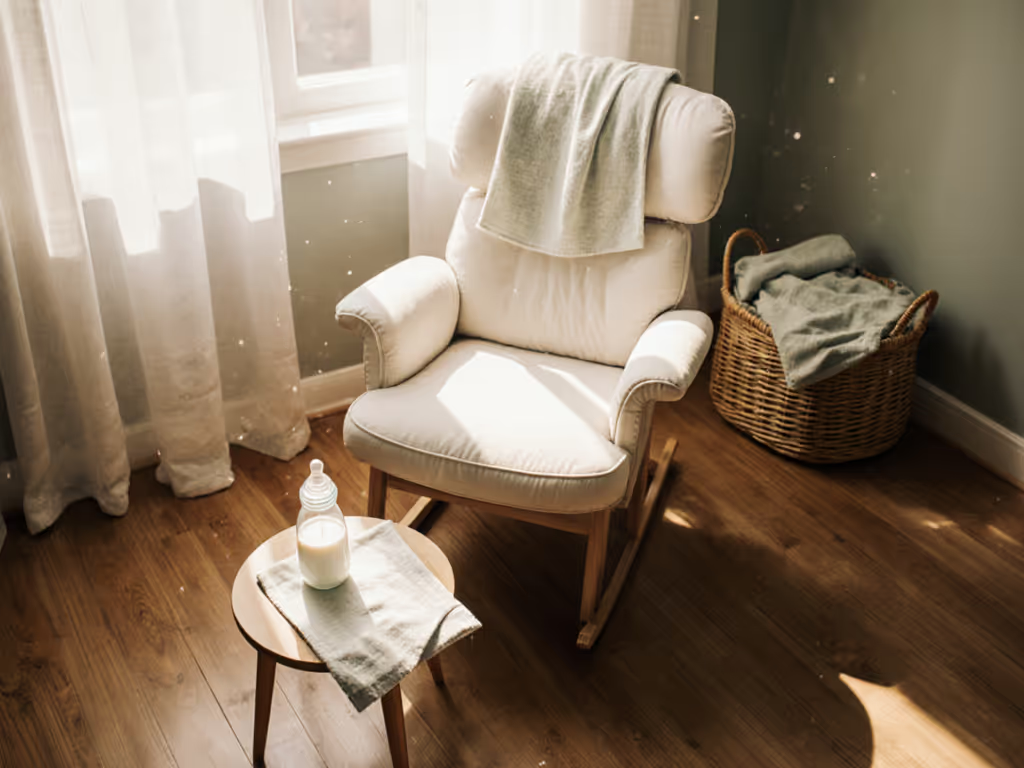
Step-by-Step Guide to Preventing Nipple Confusion Easily

Nipple confusion affects up to 30 percent of babies who alternate between breast and bottle, leaving many parents searching for solutions. Creating a smooth transition without disrupting breastfeeding takes more than guesswork. Choosing the right equipment and learning a few simple techniques can make a world of difference. Discover practical steps to help your baby move confidently between breast and bottle while protecting your breastfeeding relationship.
Quick Summary
| Key Point | Explanation |
|---|---|
| 1. Choose breast-like feeding equipment | Select bottles and nipples mimicking breastfeeding to prevent nipple confusion and ease transition. |
| 2. Master breastfeeding before introducing bottles | Establish exclusive breastfeeding for 3-4 weeks for better feeding mechanics before trying bottles. |
| 3. Use baby-led paced feeding techniques | Allow babies to control bottle feeding by closely mimicking natural breastfeeding patterns and movements. |
| 4. Monitor latch and feeding responses closely | Observe your baby's cues and latch quality to ensure effective feeding and identify potential issues. |
| 5. Adjust routine based on baby's feedback | Be flexible with feeding pace and respond to fullness signals to support a positive feeding experience. |
Step 1: Choose feeding equipment designed for breast-like flow
Reducing nipple confusion starts with selecting smart feeding equipment that mimics natural breastfeeding mechanics. Your goal here is finding bottles and nipples that feel incredibly similar to mom's breast, helping babies transition smoothly between nursing and bottle feeding.
Research highlights specialized nipple designs like the Combi Breastfeeding Model and Pigeon Weak Sucking Nipple as excellent options for maintaining a breast-like feeding experience. These carefully engineered nipples replicate key breastfeeding characteristics such as soft texture, controlled milk flow, and responsiveness to infant sucking patterns. For babies with specific feeding challenges, advanced models like the Haberman Feeder offer remarkable adaptability by allowing milk flow to be controlled through tongue and gum pressure.
When shopping for bottles, look for these critical breast-mimicking features:
- Soft silicone nipples with gradual slope design
- Variable flow rates matching infant age
- Wide nipple base that stretches similar to breast tissue
- Flexible material responding to baby's sucking rhythm
Pro tip: Always test the bottle nipple's flow by turning it upside down. If milk drips too quickly, it might overwhelm your baby and increase nipple confusion risk. Aim for a slow steady drip that requires gentle suction similar to breastfeeding.

Step 2: Establish consistent breastfeeding before introducing bottles
This step is all about creating a strong foundation for your baby's feeding journey by mastering direct breastfeeding before bringing bottles into the mix. Experts recommend waiting until breastfeeding is well established before transitioning to any alternative feeding methods.
According to leading healthcare research, exclusively breastfeeding for the first several weeks allows your baby to fully learn and master the complex mechanics of nursing. Breastfeeding and bottle feeding involve entirely different muscle movements and sucking techniques. Your baby needs time to develop the unique tongue and jaw coordination required for effective breastfeeding before being introduced to bottle nipples.
Here are practical strategies to help you successfully establish breastfeeding:
- Feed your baby directly at the breast for at least 3-4 weeks
- Practice frequent skin to skin contact during feeding
- Allow baby to set the feeding pace and rhythm
- Ensure proper latch and comfortable positioning
- Watch for hunger cues and feed on demand
Warning: Introducing bottles too early can lead to nipple confusion where babies struggle to switch between breast and bottle. Patience during these initial weeks is key to creating a smooth long term feeding experience.
Step 3: Introduce bottles using baby-led paced techniques
Baby-led paced bottle feeding transforms how you approach bottle introduction, creating a feeding experience that closely mimics natural breastfeeding. This technique empowers your baby to control the feeding process and reduces the risk of nipple confusion or overfeeding.
Research from pediatric resources reveals that paced bottle feeding involves specific positioning and technique. Hold your baby in a more upright position slightly reclined at about a 45 degree angle. Gently touch the bottle nipple to your baby's lips and wait for them to open their mouth and draw the nipple in. When positioning the bottle, keep it horizontal rather than angled downward this allows your baby to control milk flow using their own suction and tongue movements.
Key steps for successful paced bottle feeding include:
- Keep the bottle parallel to the ground
- Wait for baby to initiate sucking
- Pause every few sucks to mimic natural breastfeeding rhythm
- Watch for signs of fullness or discomfort
- Use slow flow nipples that require active sucking
Warning: Never force the nipple into your baby's mouth or tilt the bottle at a steep angle. Patience and gentle approach are essential to helping your baby learn this new feeding skill smoothly and comfortably.

Step 4: Monitor baby's latch and feeding response closely
Understanding your baby's feeding signals is like learning a secret language unique to each infant. This critical step involves carefully observing how your baby interacts with both breast and bottle to prevent potential feeding complications and ensure smooth transitions.
Leading health resources emphasize that monitoring latch quality goes beyond just watching milk transfer. You want to track subtle cues that indicate comfortable and effective feeding. Watch for signs like rhythmic sucking patterns deep jaw movements and consistent swallowing. When your baby is latched correctly their ears will slightly wiggle their cheeks will remain full and rounded and they will seem relaxed and content during feeding.
Key indicators of a good feeding response include:
- Consistent swallowing sounds
- Relaxed body posture
- No clicking or smacking noises
- Adequate wet and dirty diaper output
- Steady weight gain
Warning: If you notice persistent signs of discomfort such as frequent pulling away arching back or seeming frustrated during feeds consult a lactation specialist. These could be early warning signs of nipple confusion or underlying feeding challenges that need professional guidance.
Step 5: Adjust feeding routine based on baby's feedback
Every baby communicates their feeding needs differently, and learning to read these subtle signals is like becoming a detective of your infant's unique language. This step is about developing flexibility and responsiveness during feeding sessions to ensure your baby feels comfortable and satisfied.
Research from pediatric resources highlights the importance of following your baby's natural feeding rhythm. When bottle feeding, watch for signs that indicate your baby is ready for a pause or wants to slow down. These might include turning away briefly slowing sucking rate releasing the nipple or showing less engagement. Responding promptly to these cues helps prevent overfeeding and supports a more natural feeding experience that mimics breastfeeding patterns.
Key strategies for adapting your feeding routine include:
- Pause every few minutes during feeding
- Allow baby to set the feeding pace
- Recognize early fullness signals
- Avoid forcing baby to finish the bottle
- Remain flexible and patient
Warning: Pushing your baby to continue feeding when they show disinterest can lead to negative associations with feeding and potential digestive discomfort. Trust your baby's innate ability to communicate their nutritional needs and respond with sensitivity and understanding.
Prevent Nipple Confusion with Smart Bottle Choices and Feeding Techniques
Dealing with nipple confusion can be stressful for new parents who want the best feeding experience for their baby. This article highlights important steps like choosing breast-like nipples, establishing breastfeeding first, and using baby-led paced bottle feeding to keep your baby's feeding smooth and comfortable. It recognizes key challenges such as mismatched flow rates, improper latch, and premature bottle introduction that can lead to frustration and feeding setbacks.
If you want to take control of your baby’s feeding journey and prevent nipple confusion now visit Family Bottle Fit for expert advice and customized solutions. Explore how to select the right bottle components that fit your baby’s unique style with practical assessment methods, plus tips on matching nipple flow and material to breastfed infants’ needs. Don't let feeding challenges slow you down. Get started today with trusted guidance from Family Bottle Fit and experience calmer, more effective feeding sessions that support your baby's health and happiness.
Frequently Asked Questions
How can I choose the right bottle to prevent nipple confusion?
To prevent nipple confusion, select bottles with soft silicone nipples and features that mimic breastfeeding, such as a gradual slope design and a wide base. Aim for bottles that offer variable flow rates to match your baby's age and sucking strength.
What steps should I take to establish breastfeeding before introducing bottles?
Focus on breastfeeding directly for at least 3-4 weeks before introducing bottles. Use skin-to-skin contact and allow your baby to set the feeding pace to develop strong nursing skills.
What is baby-led paced bottle feeding?
Baby-led paced bottle feeding involves allowing your baby to control the flow of milk while bottle feeding, mimicking natural breastfeeding. Hold your baby upright and wait for them to initiate sucking, which helps reduce the risk of nipple confusion.
How can I monitor my baby's feeding response when switching between breast and bottle?
Pay close attention to your baby's latch and feeding cues, like rhythmic sucking and relaxed posture. Look for signs of discomfort, such as pulling away or frustration, and consult a lactation specialist if these persist.
How should I adjust my feeding routine based on my baby's signals?
Be flexible and responsive to your baby's feeding signals, such as turning away or slowing down. Pause every few minutes during feedings and avoid forcing your baby to finish the bottle, which supports a more natural feeding rhythm.
What are some clear signs of nipple confusion in my baby?
Signs of nipple confusion may include difficulty latching, fussiness during feeding, or oral discomfort. If your baby consistently pulls away, arches their back, or is frustrated at the breast or bottle, reconsider your feeding approach.
Related Articles


Why Slow Flow Nipples Matter: Complete Guide

Complete Guide to the Role of Bottle Construction

Step-by-Step Guide to Anti Colic Bottles for Parents

